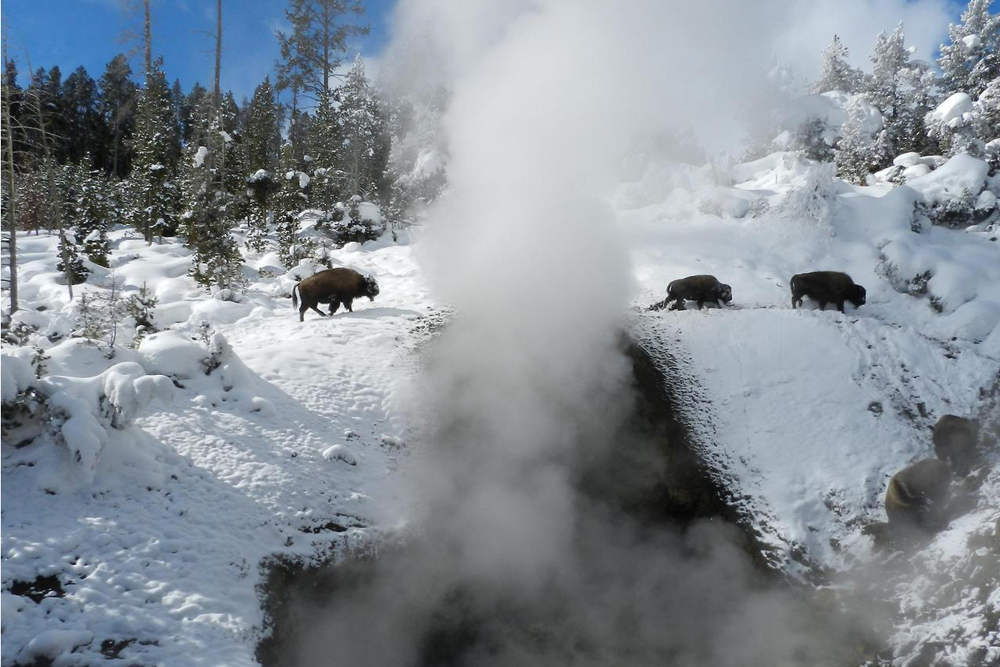Image: Bison Roam At Yellowstone's Dragon's Mouth


You can hear the hissing from Dragon's Mouth Spring before you can see it. Visitors tip-toe to the cave-covered spring, curious about the noise and steam emanating from the darkness.
An unknown visitor named the spring in 1912 after comparing the steam's likeness to the smoke from a fire-breathing dragon. Water once surged from the dark cave like the lashing of a dragon's tongue, according to a sign at the spring. The water doesn't surge much today, and visitors won't find any dragons here, of course, but bison are easy to find on snowy days.
Bison feed around Dragon’s Mouth Spring where it is too warm for the snow to accumulate. The bison don't seem bothered by the mysterious hissing from the spring, caused by steam and gases exploding through the water, which then crashes against the cave's inner walls.
Yellowstone is well-known for its other famous thermal features. Old Faithful and the majority of the world's geysers are found in the park, and they are the main reason the park was established in 1872 as America's first national park. With half of the earth's geothermal features, Yellowstone holds the planet's most diverse and intact collection of geysers, hot springs, mudpots, and fumaroles.
Follow OurAmazingPlanet @OAPlanet, Facebook & Google+.
Get the world’s most fascinating discoveries delivered straight to your inbox.


